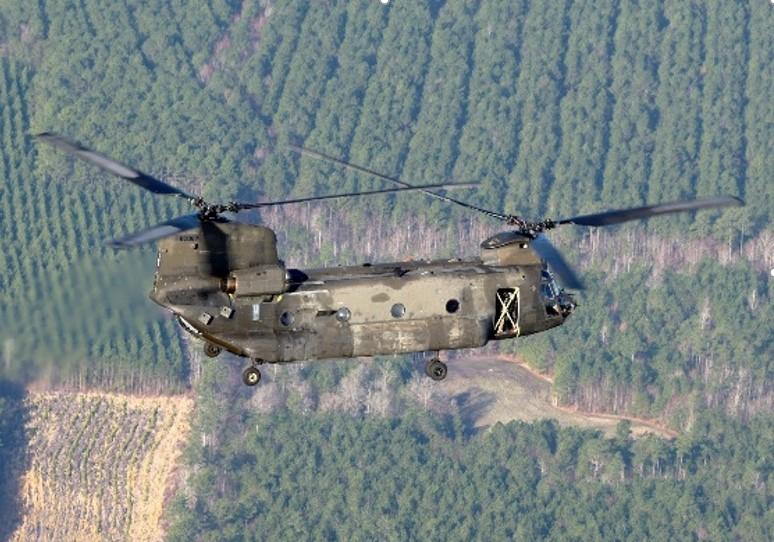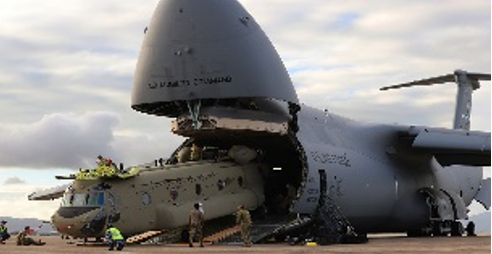- FMA
- The Fabricator
- FABTECH
- Canadian Metalworking
Our Publications
Categories
- Additive Manufacturing
- Aluminum Welding
- Arc Welding
- Assembly and Joining
- Automation and Robotics
- Bending and Forming
- Consumables
- Cutting and Weld Prep
- Electric Vehicles
- En Español
- Finishing
- Hydroforming
- Laser Cutting
- Laser Welding
- Machining
- Manufacturing Software
- Materials Handling
- Metals/Materials
- Oxyfuel Cutting
- Plasma Cutting
- Power Tools
- Punching and Other Holemaking
- Roll Forming
- Safety
- Sawing
- Shearing
- Shop Management
- Testing and Measuring
- Tube and Pipe Fabrication
- Tube and Pipe Production
- Waterjet Cutting
Industry Directory
Webcasts
Podcasts
FAB 40
Advertise
Subscribe
Account Login
Search
Chinook helicopter takes to the air with first flight-critical 3D-printed part
- August 22, 2021
- News Release
- Additive Manufacturing

As part of a recent engine demonstration, a Chinook helicopter was flown with more powerful engines and an additively manufactured flight-critical part. GE Aviation
A recently completed engine demonstration proved that a Boeing Chinook heavy-lift helicopter can be fitted with more powerful engines—in this case, GE Aviation’s T408s.
But that wasn’t the demo’s only achievement. Boeing also installed a 3D-printed aluminum transmission housing—reportedly the first flight-critical part on a rotorcraft.
Using AM technology for the gearbox housing reduced the long lead time needed with traditional manufacturing and enabled design enhancements that improved quality, reports Boeing. The 3D-printed transmission housing is expected to promote greater use of AM in the aircraft industry.
“AM allows a level of creativity in design that is not possible with traditional methods and is being used to optimize the design of better aerospace products,” said Melissa Orme, vice president of Boeing Additive Manufacturing. “We’re continuously looking to identify opportunities where we can employ additive manufacturing to improve product performance through streamlining the vehicle, reducing its weight, and providing more durability.”
Joining Boeing in the multiyear project were the U.S. Army Combat Capabilities Development Command Aviation & Missile Center (DEVCOM AvMC) and GE Aviation. The success of the project demonstrates how integration of more powerful engines on the H-47 Chinook could support future aircraft capability and Army Aviation modernization efforts while reducing technical and integration risk, according to a GE press release. The twin 7,500-shaft-horsepower T408 engines offer a 54% increase in power over the Chinook’s current engines.
The demo team conducted 18 ground tests from late 2019 into early 2021. Despite travel restrictions posed by COVID-19, the team completed all required ground tests before the first flight in September 2020. The flight-test program explored the T408-powered Chinook’s capabilities at three different gross-weight configurations, airspeeds up to 140 knots, turns at bank angles up to 60 degrees, and altitudes of 4,000 ft. Results of the flight demonstrations will be used to inform future Army plans.
“The T408 program is a great example of how AvMC’s collaboration with industry partners is producing new capabilities for our aviation warfighters,” said Col. Justin Highley, commander of Systems Integration and Demonstration, AvMC Technology Development Directorate for Aviation. “Integrating a new engine onto a production aircraft was a large undertaking, but the team rose to the challenge and met all the program goals. I am particularly proud of the resilience they showed in completing the final integration and testing in a COVID environment, which is a testament to this team’s dedication to our soldiers.”
- Podcasting
- Podcast:
- The Fabricator Podcast
- Published:
- 04/16/2024
- Running Time:
- 63:29
In this episode of The Fabricator Podcast, Caleb Chamberlain, co-founder and CEO of OSH Cut, discusses his company’s...
- Trending Articles
- Industry Events
16th Annual Safety Conference
- April 30 - May 1, 2024
- Elgin,
Pipe and Tube Conference
- May 21 - 22, 2024
- Omaha, NE
World-Class Roll Forming Workshop
- June 5 - 6, 2024
- Louisville, KY
Advanced Laser Application Workshop
- June 25 - 27, 2024
- Novi, MI

























